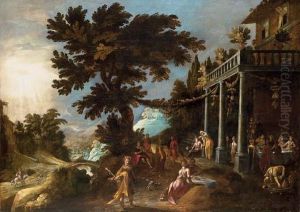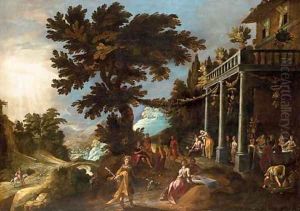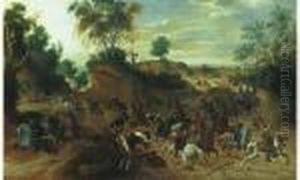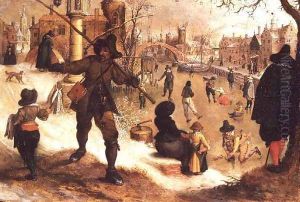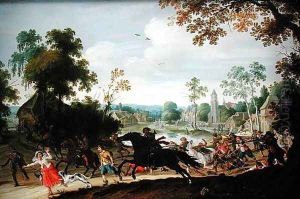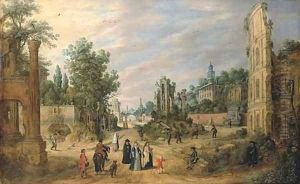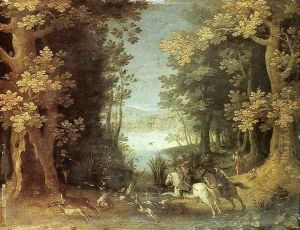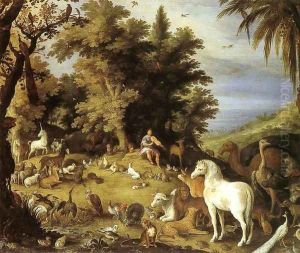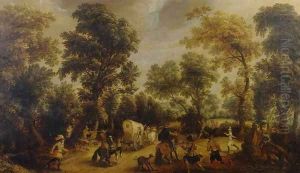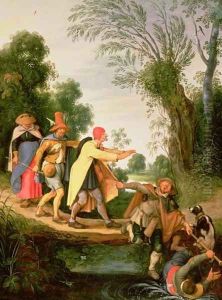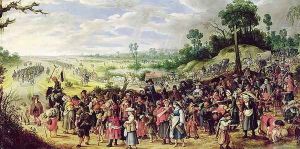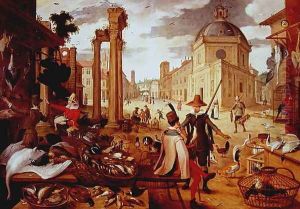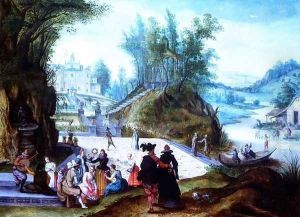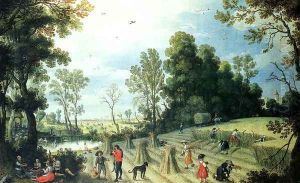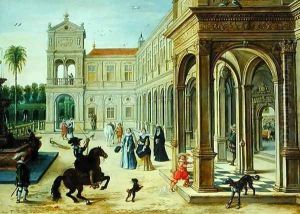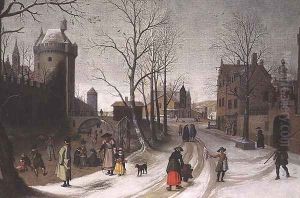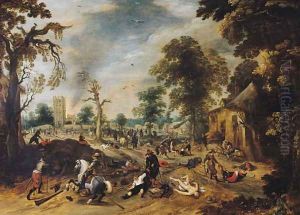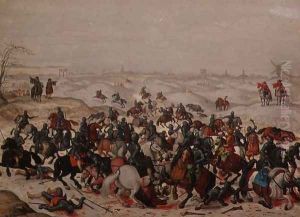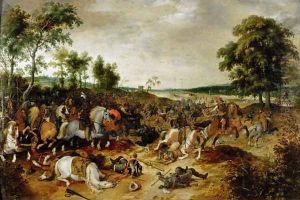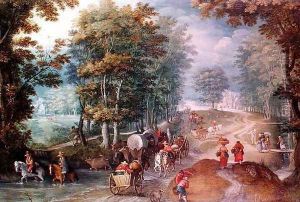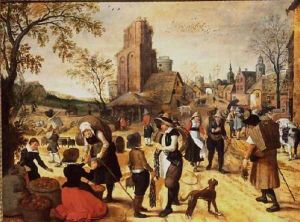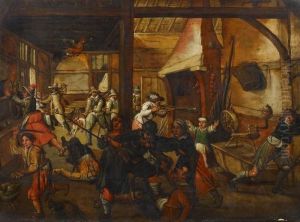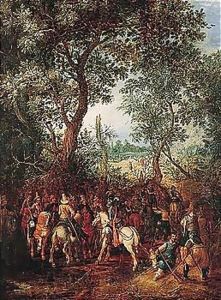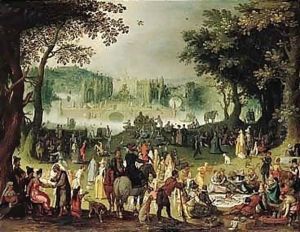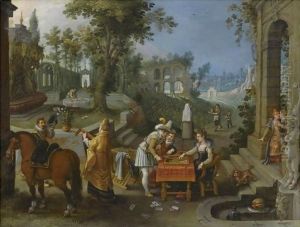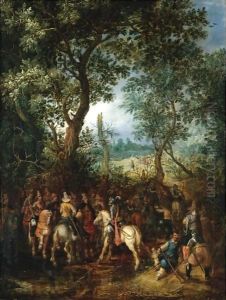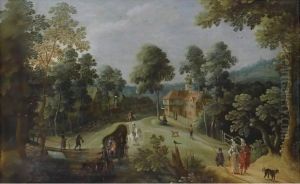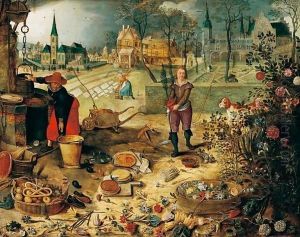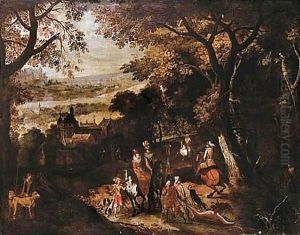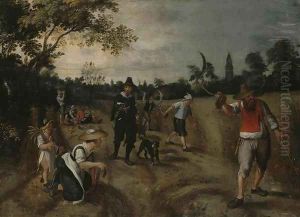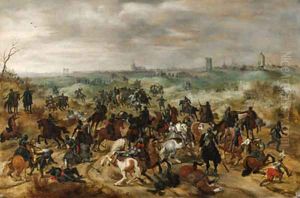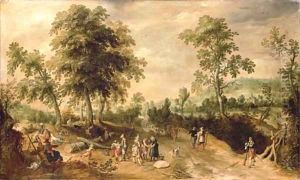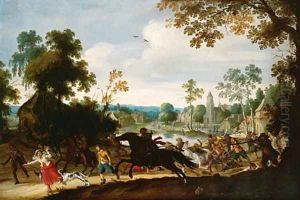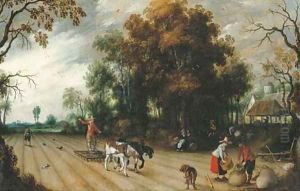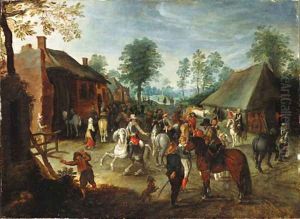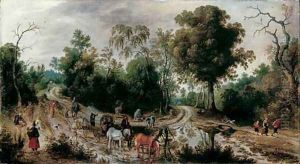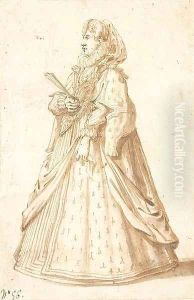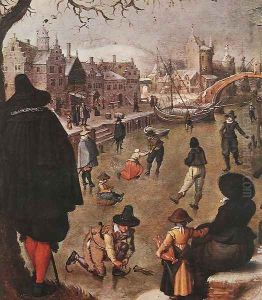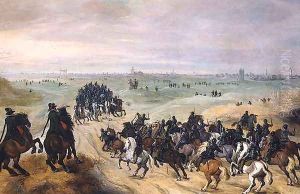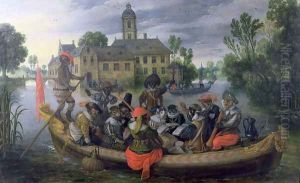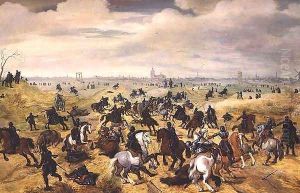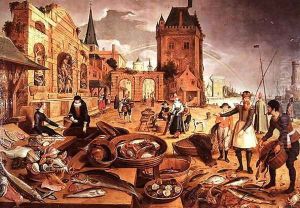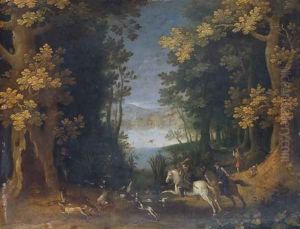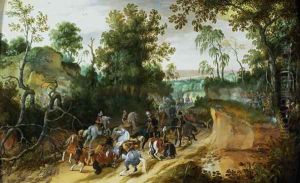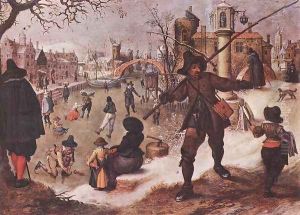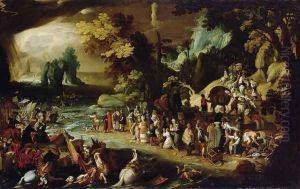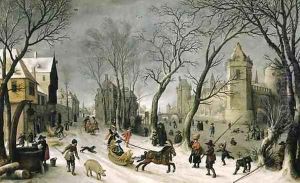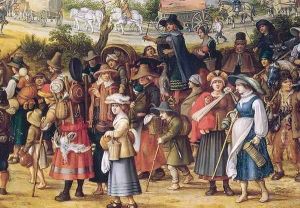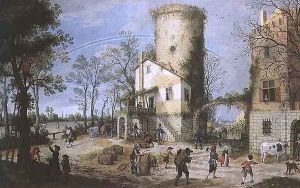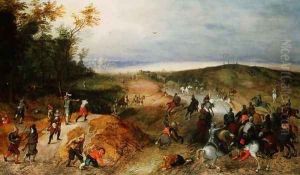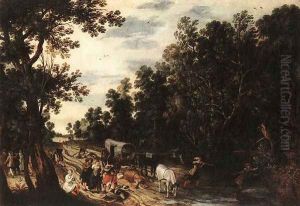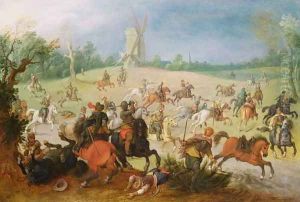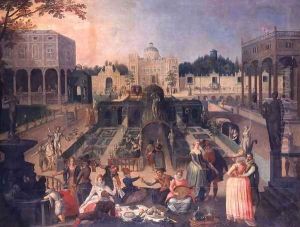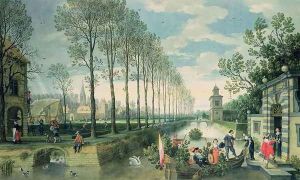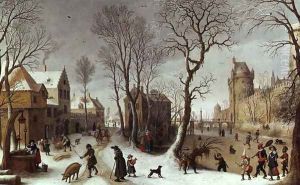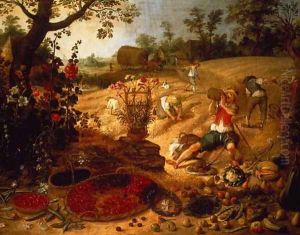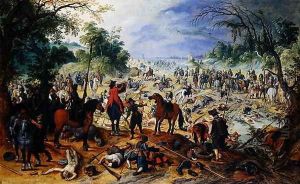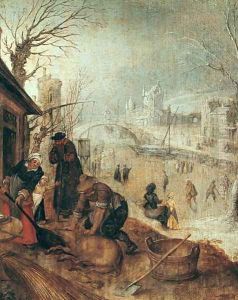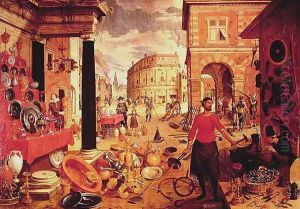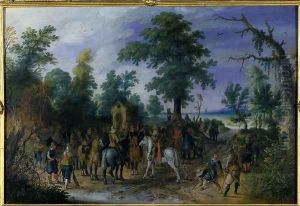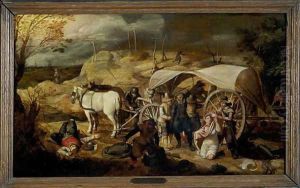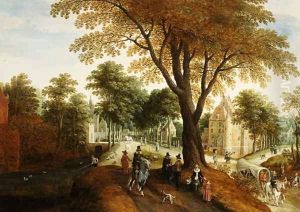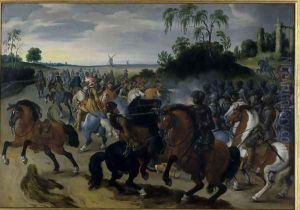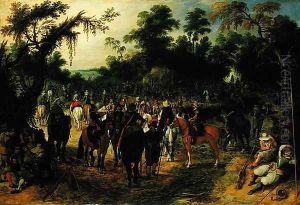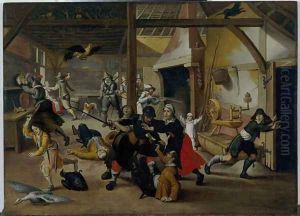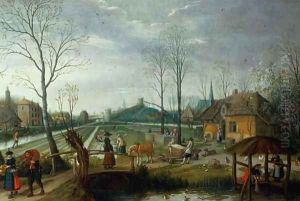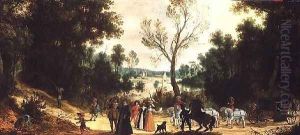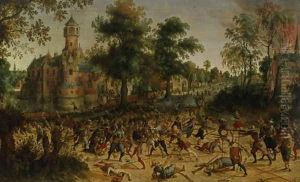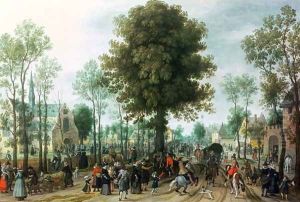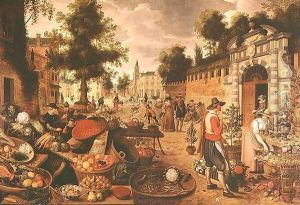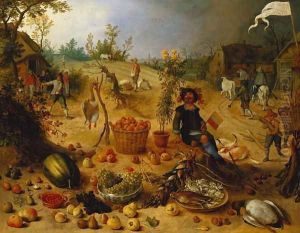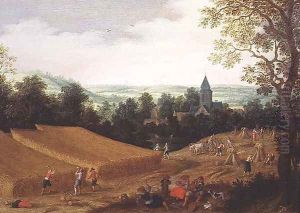Sebastien Vrancx Paintings
Sebastien Vrancx was a notable figure in the Flemish Baroque painting tradition, born in Antwerp, Spanish Netherlands (now Belgium), in 1573. He was an artist and a draughtsman known for his landscapes, battle scenes, and depictions of sieges and robberies, which were prevalent themes during the Eighty Years' War. Vrancx's contributions are significant in the transition of landscape and genre painting from the 16th to the 17th century in Flemish art.
Vrancx received his initial training in the workshop of Adam van Noort, who was also the master of Peter Paul Rubens. His early career was marked by a trip to Italy, which was a common practice among artists of his time, seeking inspiration and learning from the Renaissance masters. Upon his return to Antwerp in the early 1600s, he became a master in the Guild of St. Luke, an association for painters and other artists, and he played an active role in the cultural life of the city.
Throughout his career, Vrancx was known for his innovative approach to painting. He was one of the first in Flanders to specialize in depicting battles and military campaigns, influenced by his own experiences and the ongoing conflicts of the Eighty Years' War. His works are characterized by dynamic compositions, detailed figures, and a keen observation of the chaos and drama of battle. Vrancx also explored themes of banditry and the darker aspects of human nature, reflecting the tumultuous times he lived in.
In addition to his battle scenes, Vrancx was skilled in creating landscapes and genre scenes, often imbuing them with moral or allegorical meanings. His landscapes are noted for their detailed representation of nature and the effective use of perspective, which showed a clear departure from the more stylized approach of his predecessors.
Sebastien Vrancx also contributed to the development of stage design in Antwerp, designing sets for city pageants and other events, which further illustrates his versatility and creativity as an artist. Despite his contributions to Flemish art, Vrancx did not gain the same level of posthumous recognition as some of his contemporaries, such as Rubens. However, his work remains an important part of the study of the Baroque period and offers valuable insights into the historical and cultural context of the time.
Vrancx passed away in Antwerp in 1647, leaving behind a body of work that continues to be studied and admired for its historical significance and artistic merit.
